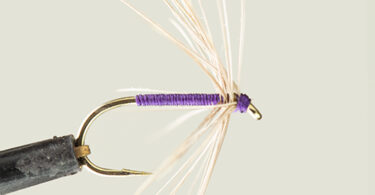
The River Calder as it flows past Copley Church ©Joel Barrow 2012
As we approach the colder days of winter the grayling can get harder to find as they shoal up and the shoals move around from day to day. Jonathan Hoyle wrote the following article after we spent a frosty winters day fishing on the river Calder near Halifax.
You approach a stretch of river and there is no sign of any rising fish. The water is coloured or perhaps too turbulent to be able to watch for any fish moving in the water. Maybe it’s a new piece of water and you cannot go off a mental map of where you have caught fish before.
Where do you start? Where will the fish be holding?
This was a problem facing myself and Joel on a recent trip to the Yorkshire Calder in early January. We had fished the known ‘hotspots’ and being a cold January day there wasn’t a hatch in sight to give the locations away. As we walked the beat a stretch of water could be seen through the trees. ‘Looks worth a go’ I said to Joel so he invited me to go in first and he would follow behind both fishing a team of 3 small tungsten nymphs on a French leader. The first section was a long glide with a defined ‘slack line’ ¾ of the way across. The team of nymphs were pitched upstream on the current side of the seam and on was a fish, a lovely little grayling. Moving up this line two more fish were taken. At the top of the glide two channels came in around an Island. The left hand channel was deep and the right hand was shallower. Where the two came together a distinct ‘foam seam’ could be seen. Stationing ourselves either side of the seam working upstream channel we managed to extract 10 fish and ‘prick’ a few more. I ventured off up the shallower channel and from under the branches of a fallen tree took a lively trout and then above in seeming open water a small grayling. Wading up to where the fish was taken there was a boulder and a small depression behind where it had been stationed. This short stretch had been more successful than the hotspots combined!
Joel asked me once we got out the river what had made me choose such a spot where so many others may have walked on by. I explained it was the network of features within the glide and run that just ‘looked fishy’. In the depths of winter fish don’t want to work hard for their food to maximise reserves. The glide and the run were great fish holding areas as they had the depth to avoid predators the slack water to hold in and a conveyor belt of food from the current to move into and back to intercept food without burning too much energy. The fish merely had to turn on the fin to take food then back down again. The tree was the same overhanging cover and organic matter to attract insects. The boulder in the middle of the run gave cover and an area of holding water to sit in whilst the food was brought to the fish.
This section certainly went in the mental map bank for future visits but many more areas can be found like this by reading the river and putting yourself where the fish would want to be. Look for the seam line between fast and slow water, look for foam lines which carry food, look for boulders or vegetation in the river that provides a break in the current. Find these and you are well on your way!





Great read, especially after being out in minus 4 on the river swale today.